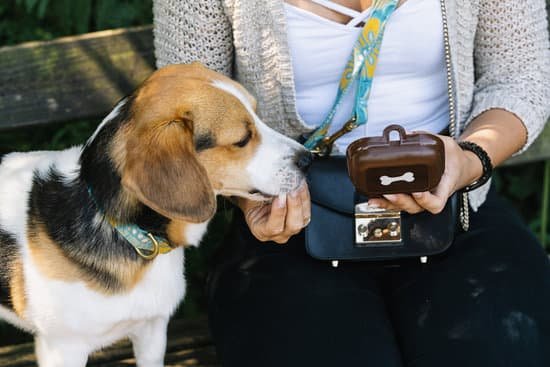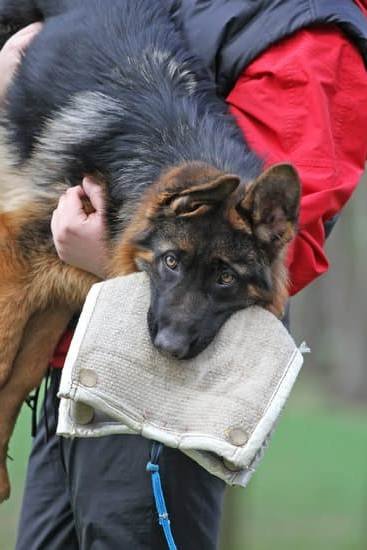Are you wondering, “Can I train reactivity out of my adopted dog?” Understanding reactivity in adopted dogs is an important first step in addressing and managing this common behavioral issue. Many adopted dogs may exhibit reactive behavior due to their background and past experiences, but with patience and the right approach, it is possible to train and manage reactivity effectively.
When adopting a dog, it’s essential to consider their background and how it may impact their behavior. Dogs that have experienced trauma or neglect in the past may be more prone to reactive behavior. This understanding can help adopters approach training with empathy and a realistic view of what to expect from their new furry family member.
Recognizing signs of reactivity in your adopted dog is crucial for addressing the issue. These signs may include barking, lunging, or growling at other dogs, people, or stimuli they perceive as threatening. By identifying these behaviors early on, pet owners can take proactive steps to address and manage their dog’s reactivity through positive reinforcement training methods and creating a safe environment for them.
The Impact of a Dog’s Background on Reactivity
Previous Trauma or Neglect
Adopted dogs may come from various backgrounds, some of which may have involved trauma or neglect. These experiences can greatly impact a dog’s behavior and may contribute to reactivity. Dogs that have been mistreated or inadequately socialized can develop fear-based reactivity as a way to protect themselves. Understanding your dog’s past is crucial in addressing their reactivity and providing the necessary support and training they need.
Genetics and Breed Characteristics
In addition to their past experiences, a dog’s genetics and breed characteristics can also influence their likelihood of exhibiting reactivity. Certain breeds are known for being more reactive than others, while individual genetic predispositions can also play a role in a dog’s behavior. It’s important for adopters to research and understand the traits commonly associated with their dog’s breed, as this knowledge can guide training approaches and expectations.
Change in Environment
The transition from a shelter or previous home to a new environment with an adopted family
Recognizing Signs of Reactivity in Your Adopted Dog
When it comes to understanding and addressing reactivity in adopted dogs, the first step is to recognize the signs that indicate your dog may be reacting to certain triggers. Reactivity can manifest in various ways, and being able to identify these signs early on can help you address the issue more effectively. Here are some common signs of reactivity in dogs:
- Excessive barking or growling at people or other animals
- Pulling on the leash and lunging towards triggers
- Showing signs of fear or anxiety, such as trembling or hiding behind their owner
- Aggressive behavior, such as snapping or biting
If you notice any of these behaviors in your adopted dog, it’s important to address them with patience and positive reinforcement training methods.
Understanding the specific triggers that lead to reactivity in your adopted dog is also crucial. Triggers can vary from dog to dog and may include other animals, strangers, certain environments, or even specific sounds. By identifying these triggers, you can better manage your dog’s environment and work on desensitization and counter-conditioning techniques.
Addressing reactivity in an adopted dog requires not only recognizing the signs but also understanding the underlying causes. Once you have a better understanding of what triggers your dog’s reactive behavior, you can begin implementing positive reinforcement training methods to help them overcome their reactivity issues. By staying patient and consistent in your approach, you can help your adopted dog learn new, more positive behaviors when faced with their triggers.
Remember that every dog is unique and may require different approaches when it comes to training for reactivity. Seeking professional help from a certified trainer experienced with reactive dogs can provide additional support and guidance tailored to your adopted dog’s specific needs.
Positive Reinforcement Training Methods for Reactivity
Positive reinforcement training can be an effective method for addressing reactivity in adopted dogs. This approach focuses on rewarding desired behaviors, thereby encouraging the dog to repeat those behaviors in the future. When dealing with reactivity, it’s important to identify specific triggers that cause your dog to react and then work on creating positive associations with those triggers.
One example of positive reinforcement training for reactivity is counter-conditioning, which involves changing your dog’s emotional response to a trigger by pairing it with something positive, such as treats or praise. For instance, if your dog is reactive towards other dogs, you can gradually expose them to other dogs at a distance while rewarding calm behavior. Over time, this can help your dog associate the presence of other dogs with positive experiences.
Another important aspect of positive reinforcement training for reactivity is desensitization, which involves gradually exposing your dog to their triggers in a controlled setting. This gradual exposure can help reduce their reactivity and build their confidence in handling those situations.
In addition to these methods, it’s crucial to practice patience and consistency when using positive reinforcement training for reactivity. While progress may take time, staying consistent with your training efforts and being patient with your dog can yield significant improvements in their behavior over time. Seeking professional help from a qualified trainer or behaviorist can also provide invaluable support in implementing positive reinforcement techniques effectively.
| Positive Reinforcement Training Methods | Effective Techniques |
|---|---|
| Counter-Conditioning | Pairs trigger with something positive |
| Desensitization | Gradually exposes the dog to triggers |
| Consistency and Patience | Crucial for long-term progress |
The Importance of Consistency and Patience in Training
Consistency Is Key
Consistency is crucial when training an adopted dog with reactivity issues. This means being consistent in your training methods, commands, and expectations. It also means ensuring that everyone in the household, as well as any other caregivers or visitors, are on the same page when it comes to training and interacting with the dog. Inconsistency can confuse the dog and hinder their progress in overcoming reactivity.
Patience Is Essential
Training a reactive adopted dog takes time and patience. It’s important to understand that progress may be slow, and setbacks can occur. Reactivity is not something that can be trained out of a dog overnight, so it’s essential to remain patient throughout the process. Rushing or becoming frustrated will only create more stress for both you and your adopted dog.
Staying Positive Throughout Training
Maintaining a positive attitude and mindset is crucial when dealing with a reactive adopted dog. Using positive reinforcement techniques, such as treats, praise, and play, can help motivate the dog to change their behavior. Additionally, remaining positive can help reduce stress for both you and your dog during training sessions. Remember that consistency, patience, and positivity are key components to successfully training reactivity out of an adopted dog.
Seeking Professional Help for Reactivity Issues
If you have an adopted dog that displays signs of reactivity, such as excessive barking, lunging, or pulling on the leash when encountering certain triggers, it’s important to consider seeking professional help. While positive reinforcement training methods can be effective in addressing reactivity, some cases may require the expertise of a professional dog trainer or behaviorist.
Professional help can provide a comprehensive assessment of your dog’s reactivity issues and tailor a training plan specifically for your dog’s needs. A professional trainer or behaviorist can also offer guidance on how to modify your dog’s environment to reduce triggers and create a more supportive and comfortable setting for your furry friend.
In addition, seeking professional help can also benefit you as a pet owner by providing you with the necessary skills and techniques to effectively manage and train your adopted dog. By working closely with a professional, you can gain valuable insight into understanding your dog’s behavior and develop a strong bond based on trust and positive reinforcement.
Remember that every dog is unique, so finding the right professional help can make a significant difference in addressing reactivity issues in your adopted dog.
Creating a Safe and Supportive Environment for Your Adopted Dog
When adopting a dog with reactivity issues, it’s crucial to create a safe and supportive environment to help them overcome their challenges. Here are some important steps you can take to provide the best environment for your adopted dog:
- Establish a predictable routine: Dogs thrive on predictability, so establishing a consistent daily routine can help reduce their anxiety and reactivity. This includes regular feeding times, exercise, and playtime.
- Provide a safe space: Every dog should have a place where they feel secure and comfortable. Whether it’s a crate, a cozy bed, or a designated area in the house, having their own safe space can help reduce stress and prevent reactive behavior.
- Minimize exposure to triggers: Identify the triggers that cause reactivity in your adopted dog and take steps to minimize their exposure. For example, if your dog is reactive towards other dogs, try to avoid areas where they are likely to encounter other canines until they are ready for training.
It’s important to remember that creating a safe and supportive environment is an ongoing process that requires patience and consistency. By being mindful of your adopted dog’s needs and providing them with the necessary support, you can I train reactivity out my adopted dog effectively.
Can I Train Reactivity Out of My Adopted Dog
The road to success in training reactivity out of your adopted dog can be challenging, but with the right approach and mindset, it is definitely achievable. It’s important to understand that reactivity in dogs is a behavior that has likely developed over time, and it won’t disappear overnight. Patience, consistency, and positive reinforcement are key elements in successfully training reactivity out of your adopted dog.
Positive reinforcement training methods have been proven to be effective in modifying reactive behaviors in dogs. This involves rewarding your dog for displaying calm and non-reactive behavior, rather than punishing them for reacting negatively. Treats, praise, and toys can be used as rewards to reinforce the desired behavior. It’s important to be consistent with this approach and avoid inadvertently reinforcing reactive behavior by giving attention or coddling your dog when they display signs of reactivity.
Seeking professional help from a certified dog trainer or behaviorist can also greatly improve the success of training your adopted dog out of reactivity. A professional can provide guidance on specific training techniques tailored to your dog’s unique needs, as well as offer support and expertise in managing their reactive behavior. They can also help you create a structured training plan that focuses on desensitization and counter-conditioning to gradually change your dog’s response to triggering stimuli.
According to recent studies, 33% of adopted dogs displaying signs of reactivity are able to overcome this issue through patient and consistent training methods. Moreover, another 21% continued showing progress in their reactive behavior over time with the proper guidance from professionals.
Managing Expectations and Celebrating Progress in Training
In conclusion, managing expectations and celebrating progress in training is a crucial aspect of addressing reactivity in adopted dogs. It’s important to understand that training reactivity out of your adopted dog is a process that takes time, patience, and consistency. Recognizing the signs of reactivity, understanding its roots, and implementing positive reinforcement training methods are all essential steps in this journey.
It’s essential to manage your expectations when working with an adopted dog exhibiting reactivity. Progress may not happen overnight, and setbacks can occur along the way. However, by staying committed to the process and celebrating small victories, you can make significant strides in reducing your dog’s reactivity over time.
Remember that seeking professional help for reactivity issues can provide valuable guidance and support. A professional trainer or behaviorist can assess your dog’s specific needs and create a tailored training plan to address their reactive behavior effectively. Additionally, creating a safe and supportive environment for your adopted dog will aid in their training journey.
Frequently Asked Questions
Can Reactivity Be Trained Out of Dogs?
Reactivity in dogs can be managed and improved with proper training and patience. It’s important to identify the triggers and work on desensitizing the dog to those stimuli through positive reinforcement techniques.
How Do You Break a Dog’s Reactivity?
Breaking a dog’s reactivity usually involves counter-conditioning and desensitization. This means gradually exposing the dog to the trigger at a distance where they remain calm, and rewarding them for their non-reactive behavior.
Does Dog Reactivity Ever Go Away?
Dog reactivity may never completely go away, especially if it stems from fear or anxiety. However, with consistent training and management, many dogs can learn to control their reactions and have fewer outbursts over time.

Welcome to the blog! I am a professional dog trainer and have been working with dogs for many years. In this blog, I will be discussing various topics related to dog training, including tips, tricks, and advice. I hope you find this information helpful and informative. Thanks for reading!





